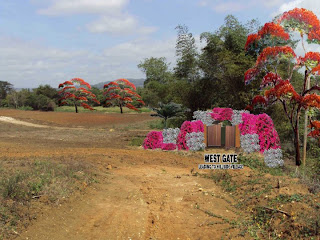
Aquaponics, also known as the integration of hydroponics with aquaculture, is gaining increased attention as a bio-integrated food production system.
Aquaponics serves as a model of sustainable food production by following certain principles:
The waste products of one biological system serve as nutrients for a second biological system.
The integration of fish and plants results in a polyculture that increases diversity and yields multiple products.
Water is re-used through biological filtration and recirculation.
Local food production provides access to healthy foods and enhances the local economy.
In aquaponics, nutrient-rich effluent from fish tanks is used to fertigate hydroponic production beds. This is good for the fish because plant roots and rhizobacteria remove nutrients from the water. These nutrients — generated from fish manure, algae, and decomposing fish feed — are contaminants that would otherwise build up to toxic levels in the fish tanks, but instead serve as liquid fertilizer to hydroponically grown plants. In turn, the hydroponic beds function as a biofilter — stripping off ammonia, nitrates, nitrites, and phosphorus — so the freshly cleansed water can then be recirculated back into the fish tanks. The nitrifying bacteria living in the gravel and in association with the plant roots play a critical role in nutrient cycling; without these microorganisms the whole system would stop functioning.
Greenhouse growers and farmers are taking note of aquaponics for several reasons:
Hydroponic growers view fish-manured irrigation water as a source of organic fertilizer that enables plants to grow well.
Fish farmers view hydroponics as a biofiltration method to facilitate intensive recirculating aquaculture.
Greenhouse growers view aquaponics as a way to introduce organic hydroponic produce into the marketplace, since the only fertility input is fish feed and all of the nutrients pass through a biological process.
Food-producing greenhouses — yielding two products from one production unit — are naturally appealing for niche marketing and green labeling.
Aquaponics can enable the production of fresh vegetables and fish protein in arid regions and on water-limited farms, since it is a water re-use system.
Aquaponics is a working model of sustainable food production wherein plant and animal agriculture are integrated and recycling of nutrients and water filtration are linked.
In addition to commercial application, aquaponics has become a popular training aid on integrated bio-systems with vocational agriculture programs and high school biology classes.
The technology associated with aquaponics is complex. It requires the ability to simultaneously manage the production and marketing of two different agricultural products. Until the 1980s, most attempts at integrated hydroponics and aquaculture had limited success. However, innovations since the 1980s have transformed aquaponics technology into a viable system of food production. Modern aquaponic systems can be highly successful, but they require intensive management and they have special considerations.














